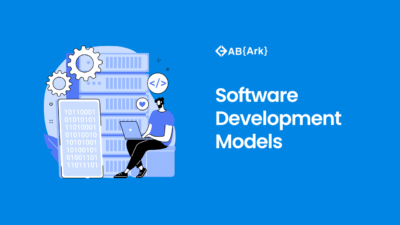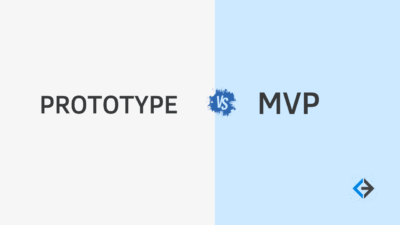Staying fit has never been more important, but it’s also never been more complicated. People juggle work, family, and lifestyle demands, leaving little room for structured exercise and nutrition planning.
Without guidance, motivation quickly fades. You download a workout app, but it lacks personalization. You buy a wearable tracker, but it doesn’t sync with your daily habits. And let’s face it—without real-time feedback, consistency is hard to maintain.
That’s where building a Fitness Tracking App comes in. Whether you’re an entrepreneur eyeing the booming digital health market or a fitness brand looking to create a personalized workout app, understanding the core features and monetization strategies will set your product apart. Let’s break down what it takes to build a fitness app that users actually love—and pay for.
What Is a Fitness Tracking App?
A Fitness Tracking App is more than just a digital step counter. It’s a comprehensive platform designed to log workouts, track calories, monitor heart rates, analyze sleep patterns, and even connect with wearable devices like smartwatches or bands.
Think of it as a personal health coach in your pocket, powered by mobile technology, AI personalization, and habit-tracking tools. Unlike traditional workout apps, modern fitness trackers combine exercise logging, nutrition databases, goal setting, and progress analytics into one seamless ecosystem.
Core Features Every Fitness Tracking App Needs
When building a fitness tracking app, success lies in features that balance usability, engagement, and accuracy. Here are the essentials:
User Profiles and Onboarding
- Personalized sign-up (age, weight, height, fitness goals).
- AI-driven onboarding quiz to tailor recommendations.
Activity & Workout Tracking
- Step counter, GPS-based running and cycling logs.
- Workout logging for gym, yoga, or HIIT.
- Sync with wearables like Fitbit, Apple Watch, or Garmin.
Nutrition and Calorie Logging
- Barcode scanner for packaged foods.
- Macronutrient and calorie database.
- Integration with apps like MyFitnessPal.
Real-Time Analytics and Progress Tracking
- Heart rate, calorie burn, sleep quality analysis.
- Graphs and weekly reports.
- Goal-tracking dashboards to improve accountability.
Gamification and Social Engagement
- Leaderboards, challenges, and badges.
- Community forums or groups for peer motivation.
- Social fitness features like Strava segments or virtual challenges.
Personalized AI Coaching
- Adaptive workout plans based on performance.
- AI-powered chatbots for reminders and support.
- Recommendations for recovery and injury prevention.
Notifications and Habit Tracking
- Smart reminders for workouts, hydration, and sleep.
- Streak counters to promote habit formation.
These features transform a standard workout app into a digital health and wellness ecosystem.
Tech Stack and Development Considerations
Building a fitness tracking app requires a well-thought-out tech stack:
- Front-end: React Native or Flutter for cross-platform development.
- Back-end: Node.js, Django, or Ruby on Rails with cloud hosting.
- Database: PostgreSQL or Firebase for secure health data storage.
- Wearable Integration: APIs like Google Fit, Apple HealthKit, or Fitbit SDK.
- AI & ML: TensorFlow Lite for predictive analytics and adaptive coaching.
Security is critical—user health data is sensitive, so GDPR and HIPAA compliance should guide your architecture.
Monetization Strategies for Fitness Tracking Apps
A great app isn’t just about features; it needs a sustainable business model. Here are proven ways to monetize:
1. Freemium Model
- Free basic features: step tracking, calorie logging.
- Premium tier unlocks personalized AI coaching, advanced analytics, or nutrition tracking.
2. Subscription Plans
- Monthly/annual memberships for unlimited access.
- Tiered pricing for solo users, families, or businesses.
3. In-App Purchases
- Selling custom workout plans, diet guides, or one-time coaching sessions.
- Virtual goods: challenges, badges, or gamified rewards.
4. Affiliate Partnerships
- Partner with gyms, fitness equipment, or nutrition brands.
- Earn commission on wearable devices and supplements.
5. Corporate Wellness Programs
- Offer group subscriptions to companies.
- Integrate wellness challenges that track employee progress.
6. Ads and Sponsorships
- Carefully curated ads for fitness gear or health services.
- Sponsored challenges from fitness brands.
Benefits of Building a Fitness Tracking App
For users:
- Accountability & Motivation: Streaks, badges, and leaderboards.
- Self-awareness: Real-time insights into diet, exercise, and sleep.
- Convenience: All-in-one health data in one app.
For businesses:
- Scalable Revenue Streams via subscriptions and partnerships.
- Brand Loyalty by keeping users engaged daily.
- Data-Driven Insights into fitness trends and behavior.
Challenges and How to Overcome Them
While the opportunity is massive, building a fitness tracking app comes with challenges:
- User Retention: Combat drop-off with gamification and push notifications.
- Privacy Concerns: Use encrypted storage and transparent policies.
- Market Saturation: Differentiate with niche features (e.g., AI-based recovery tracking).
- Accuracy Issues: Invest in wearable API integrations and machine learning models.
Future Trends in Fitness Tracking Apps
Looking ahead, the industry is shifting toward:
- AI-Powered Health Coaches: Hyper-personalized recommendations.
- Wearable Ecosystem Expansion: Smart rings, biosensors, and VR fitness apps.
- Social Wellness: Virtual workout classes and peer challenges.
- Gamified Fitness: Augmented reality workouts and immersive leaderboards.
- Data Security Enhancements: Blockchain-based anonymized fitness data.
The future of workout apps lies at the intersection of personalization, community, and trust.
FAQs
Q1: How long does it take to build a fitness tracking app?
On average, 4–6 months depending on complexity, integrations, and features.
Q2: How much does it cost to develop a fitness tracking app?
Anywhere between $30,000 to $150,000, based on scope, design, and platform support.
Q3: Do fitness apps really help people get fit?
Yes—studies show they encourage habit formation, boost activity, and improve accountability when paired with consistent effort.
Q4: How do I stand out in a crowded app market?
Focus on niche differentiation (e.g., senior fitness, corporate wellness, or nutrition-first tracking) and gamification strategies.
Turning an Idea Into Impact
The global shift toward digital fitness shows no signs of slowing down. A well-designed fitness tracking app isn’t just another mobile tool—it’s a personalized health ecosystem that motivates, engages, and supports users in real time.
By combining core features like activity tracking, nutrition logging, and social engagement with smart monetization strategies, you can build an app that thrives in a competitive market.
The opportunity is massive, the demand is growing, and the technology is here. So Don’t just dream it—develop your fitness tracking app with the right strategy. Contact us today.



